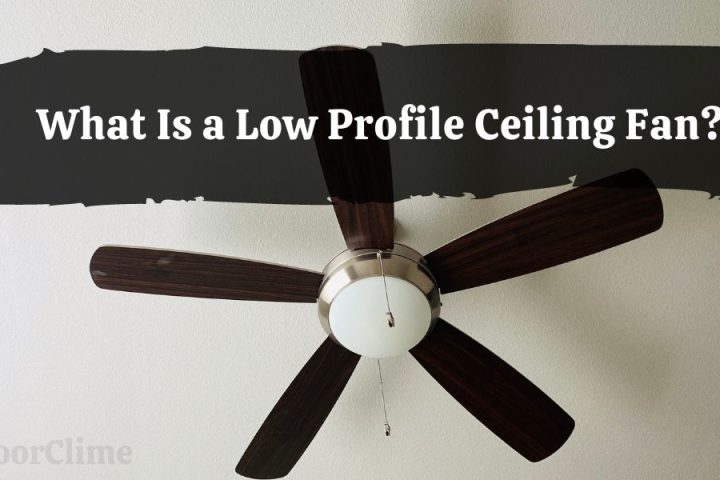The recommended number of blades for ceiling fans is three. Nevertheless, while fans with four or five blades will effectively circulate the air, installation and overall performance factors like weight, noise, and power demand must also be considered.
What is the ideal number of blades? To provide you with an answer to this question, we did some research on the best airflow that ceiling fans can provide.
Is It Better To Have 3, 4, Or 5 Blades On a Ceiling Fan?
Before purchasing, consider additional factors, including the number of blades, even though most contemporary ceiling fans differ mainly in aesthetics and designs.
You’ll often find that most ceiling fans have anything from three to five blades. Let’s look at how the performance of the various blade numbers varies.
3-Blade Ceiling Fans

The prevailing consensus is that a ceiling fan’s ability to move more air will grow with its number of blades. While the principles of physics alone support this assumption, how much drag the extra blades create is frequently overlooked.
Therefore, three-blade fans are the best.
- They have the right number of blades to create airflow without adding too much drag.
- Their minimalist and modern designs look fantastic in professional situations, making them more appealing.
- These fans often use less energy and are lighter than those with more blades. In other words, you won’t have to worry about rising energy costs once you install one.
- The noise level of different 3-blade ceiling fans might vary. If you’re placing a fan in an industrial setting, this won’t be a problem, but it might be inconvenient in a smaller location, like a home or a small office.
4-Blade Ceiling Fans

Compiling fans with four blades often provides the best balance for home use.
- They often make less noise and can provide additional cooling to spaces with air conditioners.
- Fans with four blades typically have more design options than fans with other blade counts, and they can be bought for reasonable rates.
- These fans rotate slightly more slowly than 3-blade variants.
- They are generally more expensive, even though they are usually inexpensive.
- This is so that the heavier motors required for 4-blade fans can support the additional blade.
Generally speaking, 4-blade fans aerate slightly better than 3-blade fans. The overall efficiency of the ceiling fan will, however, depend more on the chosen brand.
5-Blade Ceiling Fans

The closer spacing of the blades on ceiling fans with five blades results in higher airflow.
- The noise level of these fans is often much lower than that of ceiling fans with three or four blades.
- These fans are generally more balanced because they have more blades, and some can cool a room a little bit faster depending on the aerodynamics of the blade shapes.
- Both indoor and outdoor home settings can benefit significantly from using five-blade ceiling fans.
- Since these fans must accommodate more blades, their motors require more power. Will it matter so much that it wrecks our finances? No. But if you want to use your ceiling fan constantly, you should bear that in mind.
- These fans typically cost a little more because they are still viewed as having a more distinctive appearance, mainly if they include a light fixture (less common than their three and four-blade counterparts).
Are More Blades Better On a Ceiling Fan? What’s The Difference?

Fewer blades on a fan mean less dragon on the motor type. This implies that it can move more air quickly. More airflow and a better wind chill impact result as a result.
Finally, the blades’ unique design ensures air is captured and transported throughout your house.
1. Difference In Breeze Or Gust
With a stronger motor, a fan with fewer blades often rotates more quickly—a larger wind chill impact results from this. A fan with more blades can be necessary if you want a soft breeze.
2. Less Ambient Noise
It is well known that fans with more blades are quieter than those with fewer blades.
Additionally, fans with more blades typically have better balance and produce less background noise. When selecting a fan, consider your needs and the size of your room.
As the number of blades on a ceiling fan increases, it circulates less air and becomes quieter. The motor may run slower and with more drag if the ceiling fan has more blades.
3. Differences In Blades
a. 3-blade Ceiling Fans
3-blade ceiling fans are typically easier on the wallet. They have a dynamic blade balance and are also aesthetically beautiful. In addition to having fast speeds, 3-blade fans have fewer moving components and need less power to revolve.
Because the fan requires less energy because it is lightweight, your energy expenses will be lower. Some 3-blade ceiling fans, meanwhile, can be noisier than those with more blades. They frequently serve industrial or workplace needs better.
b. 4-blade Ceiling Fans
Because they are less noisy, 4-blade ceiling fans are ideal for circulating cool air in air-conditioned rooms. They frequently appear to be more fashionable.
However, 4-blade ceiling fans can be more expensive than 3-blade ones and may circulate air more slowly.
c. 5-blade Ceiling Fans
The main aesthetic and taste-related distinction between 4 and 5-blade ceiling fans is typically one of aesthetics. And, as we just mentioned, a fan will be quieter the more blades it has. But having more blades can make the motor drag more.
For the best balance between the amount of air circulated and the level of ambient noise, most ceiling fans designed for the home have 4 to 5 blades.
There are other factors to consider besides the number of blades. The term “blade span” describes the breadth of the fan measured from tip to tip, with a typical measurement falling between 42 and 52 inches.
For appropriate ventilation, the blades should be longer in larger spaces. Once more, the motor controls the airflow amount rather than the blades’ size. An efficient ceiling fan can have three smaller blades instead of four or five and have a stronger engine.
A fan with more blades will not be guaranteed to operate better or move more air. A lot of variables affect how much air a fan moves. These comprise the fan’s motor, the size, the angle (or pitch), and the number of blades.
What Type Of Ceiling Fan Moves the Most Air?

A flush-mount ceiling fan will move most air with a high CFM. Choose a high-flow model with a minimum CFM rating of 7000 if you want a lot of air movement in your space.
A fan’s blade pitch or angle causes it to “attack” the air it passes through, forcing it downward toward us. Some fans also include a reverse switch. As a result, the blades rotate counterclockwise, causing air to rise.
This is especially effective when an upward air flow mixes warmer air near the ceiling with colder air near your room’s floor. The pitch of the blades is critical since fans are designed to move air in specific directions.
Do More Blades Mean Less Noise?
Yes. Having more blades reduces noise. However, a fan with fewer blades will require a more powerful motor to provide a given CFM of airflow.
Remember that you need fewer revolutions to achieve a given quantity of airflow the more blades you have. So a harder-working motor will always make more noise.





